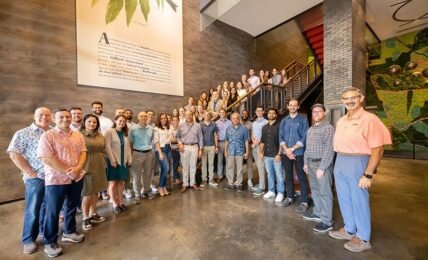By: David Solsky, CEO and co-founder, Envizi
Any organization that’s looking to lead in decarbonization should report and reduce Scope 3 emissions. Envizi shares how to tackle Scope 3 reporting with four steps.
In 2020, more organizations than ever before made public commitments to decarbonize their business. ESG performance is now accepted as a key indicator of business health and long term financial viability. Increasingly, governments, investors, financial institutions and the general public are scrutinizing emissions and ESG performance to distinguish the leaders from the laggards.
Organizations historically report their GHG emissions under scopes dictated by the GHG Protocol. Scope 1 emissions (“direct emissions”) are generated from fuel combustion onsite from company facilities or company-owned vehicles, while Scope 2 emissions (“indirect emissions”) are emitted from the consumption of purchased electricity, steam, cooling and heat.
Scopes 1 and 2 are the most controllable scopes for GHG accounting and reduction, and the focal point of any decarbonization journey. But for leading organizations under investor pressure and looking to expand their impact, Scope 3 emissions provide the opportunity to reach other emitters in their value chain – such as suppliers and customers – and influence them to reduce their emissions, too.
In this article, we unpack the challenges and opportunities of Scope 3 accounting, share 4 steps to approach scope 3 reporting in a systematic way, and highlight how sustainability software can streamline the process.
5.5x more emissions come from the supply chain
Scope 3 emissions cover all indirect impacts of an organization both upstream and downstream not covered in Scopes 1 and 2. These emissions occur as a consequence of business operations from sources that are not owned or controlled by that business directly – such as from the supply chain, transport to operational sites or to customers, product use, and end-of-life treatment.
Much of the discussion on Scope 3 emphasizes the supply chain, and is sometimes referred to as ‘supply chain emissions’. This is because, according to a 2020 World Economic Forum and BCG report, just eight supply chains (food, construction, fashion, fast-moving consumer goods, electronics, automotive, professional services and freight) account for over 50% of global emissions – with a significant share indirectly controlled by only a few companies. Furthermore, supply chain emissions account for 5.5 times more emissions on average than a company’s direct emissions. The table below shows how supply chain emissions from Scope 3 compare with direct emission by industry.
This provides a key opportunity for large companies in these industries to exercise their influence to make more sustainable purchasing decisions, and work with their existing suppliers to adopt more sustainable practices.
For reporting purposes, under the guidance of the GHG Protocol, Scope 3 emissions consist of 15 categories and fall into either ‘upstream’ or ‘downstream’ emissions types as shown in the table below:
Scope 3 reporting is far-reaching, complex, and still maturing
Given their outsized impact on overall global emission, Scope 3 emissions present a significant opportunity for organizations to engage their suppliers to accelerate decarbonization globally.
But not without hard work. Scope 3 accounting is not as widely adopted or understood as Scope 1 and 2. Further, many of the following challenges exist when approaching Scope 3 reporting:
Difficulty establishing boundaries between scopes 1 and 2 (for example – transmission and distribution loss from purchased utilities is a Scope 3 emission).Difficulty capturing reliable data in a systematic and auditable way across numerous suppliers and locations – especially sourcing primary data directly from suppliersDifficulty sourcing and selecting emission factors to derive accurate calculationsChallenges engaging with suppliers to both report and reduce emissions
Given the important role corporations play in the global supply chain and the increasing scrutiny being placed on them by investors, Scope 3 emissions will likely come into sharper focus over the coming years. ESG reporting software like Envizi can help organizations meet this challenge, and simplify what may seem like a daunting task to calculate and report Scope 3 emissions.
Four Steps for Systematic Scope 3 Reporting
With over a decade of experience supporting sustainability leaders to streamline sustainability reporting against all emission scopes, we recommend a systematic approach that’s been tried and tested by our clients.
Step 1. Determine which Scope 3 emissions categories and data types are most material (and open to influence) to your organization’s carbon footprint. One of the biggest challenges is establishing the boundaries for your Scope 3 data; determining which emissions categories, and which suppliers / data types within each you will report. The most relevant Scope 3 emissions categories vary greatly both between and within industries (see figure below). For example, vehicle manufacturers who produce fossil-fuel-powered cars would expect a significant portion of Scope 3 emissions to come from downstream category 11, “use of sold products”, whereas in food and beverage / FMCG manufacturing, a significant portion of emissions would come upstream from category 1, “purchased goods and services”. Within the commercial real estate sector, a real estate firm that develops buildings will have a very different Scope 3 category mix than a real estate investment trust that only invests in existing buildings. We recommend working with consultants or knowledgeable internal staff to apply the “relevance test” to determine the boundaries of your scope 3 reporting.
Step 2. Establish a strategy for capturing the best information in the most efficient way. After you’ve determined the boundaries of your Scope 3 reporting, the next step is to determine where you can source the data. A consultant can help assess if you have access to primary or secondary activity data and where this data can be sourced. For example, you might already have data on purchased goods and services in your organization’s ERP or accounting system, or you might be able to source primary activity data directly from your suppliers. Envizi’s ESG reporting software supports this process by automating data collection from existing systems where available – helping to reduce manual errors, version confusion, or productivity loss. We also provide intuitive workflow management tools such as KANBAN boards to support accountability and systematic capture of Scope 3 data. Envizi’s flexible data hierarchy enables large organizations to easily set and change reporting boundaries, ensuring your GHG emissions calculations stay up to date as your organization changes. Additionally, we provide traceability to the source of data and an audit trail with time stamps noting when changes were made to data.
Step 3. Calculate emissions for each category using the most appropriate emission factor(s) and/or method(s). After you’ve worked out your scope 3 boundaries and where you will source your data, you can determine which emission factor is most appropriate. Each category of Scope 3 emissions demand different emission factors and/or calculation methods, depending upon what information is available. For example, for category 1: purchased goods and services, if you only have access to spend data (dollar value) without a volume, quantity or weight for an item, you’d use the spend-based method and apply an emission factor to the dollar value of that purchased good or service to derive your emission calculation for that supplier. In other cases, where you have a cradle to grave emission factor from the supplier, you can apply the supplier method. Envizi can capture and store publicly available emission factors from lifecycle databases such as EcoInvent, as well as from US EPA (Climate Leaders), e-GRID USA, IEA National Electricity Factors, IPCC, as well as custom emission factors. We then apply our emissions engine and hierarchy management tools to derive GHG emissions calculations at any level of the organization – whole of enterprise, reporting group, location or sites.
Step 4. Disclose progress and drive performance. Envizi organizes your GHG emissions data into a single source of truth and streamlines submissions to common sustainability guidance and reporting frameworks like CDP, GRI, DJSI / SAM, SASB and GRESB with pre-built templates aligned to their requirements. In addition, Envizi provides insight to drive performance improvement – internal reports that highlight emission reduction opportunities, workflow management tools such as KANBAN boards to encourage clear tracking and accountability for data capture tasks, and performance reports that keep key stakeholders informed of progress.
Streamline Scope 3 Reporting with Envizi
Though robust and detailed processes for Scope 3 reporting are not standard practice among organizations today, we expect Scope 3 accounting to become more mature and widely adopted, following the same steep trajectory we’ve seen with Scope 1 and 2.
Any organization that’s looking to lead in decarbonization should report and reduce Scope 3 emissions. Over the past 10 years, Envizi has supported our clients to report Scope 3 emissions across all 15 categories completely out of the box, saving the cost and complexity of developing bespoke solutions. We continually develop our software with best practice and customer needs in mind to ensure our clients remain ESG leaders.
There’s no escaping Scope 3: adopt ESG data and analytics software to support a systematic and auditable approach to Scope 3. For more on how to accelerate decarbonization download our recent eBook, Optimizing the low carbon pathway.
About the author:
David Solsky, CEO & Co-Founder, Envizi
A passionate technology entrepreneur, David Solsky is CEO and co-founder of Envizi, a market leader in data and analytics software for sustainability and energy. Before launching the company in 2008, David spent a decade in the IT industry, building several successful companies in Australia and New Zealand. Prior to this, David spent seven years in the Corporate Finance and Assurance divisions at PricewaterhouseCoopers, and this experience helps ensure Envizi’s solutions meet the rigorous information-integrity standards of the corporate sector. David plays a key role in the ongoing design and evolution of Envizi’s technology platform and oversees the development of the company’s global partner channel.
The post Guest Post: Four Steps to Calculate and Report Scope 3 Emissions appeared first on ESG Today.



